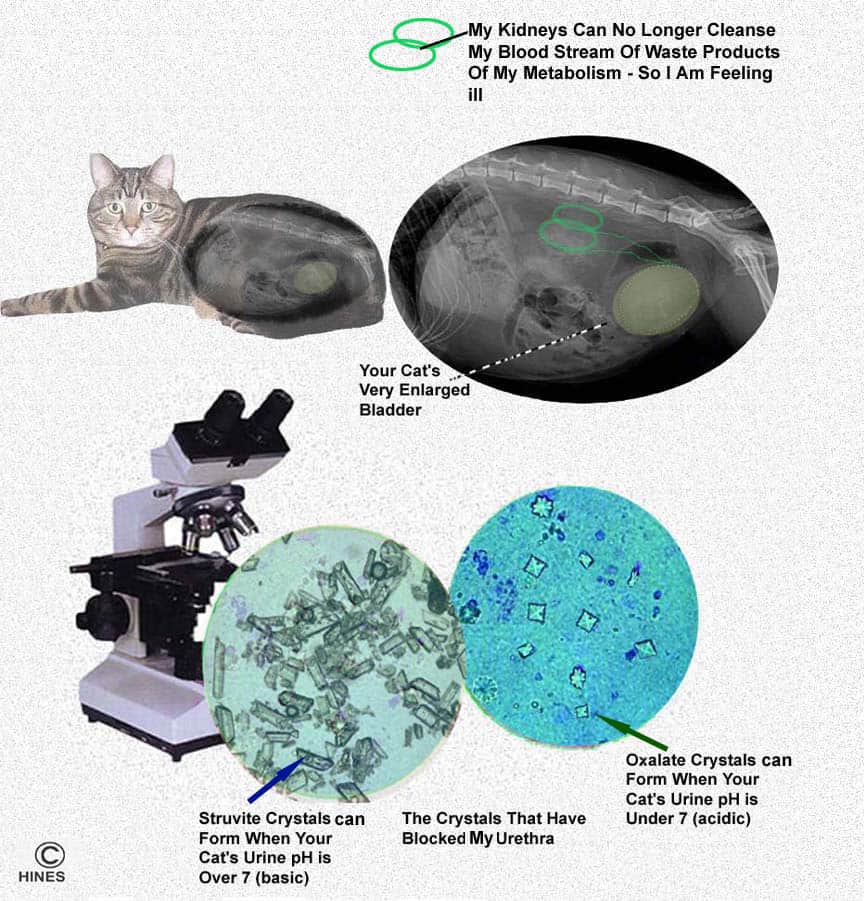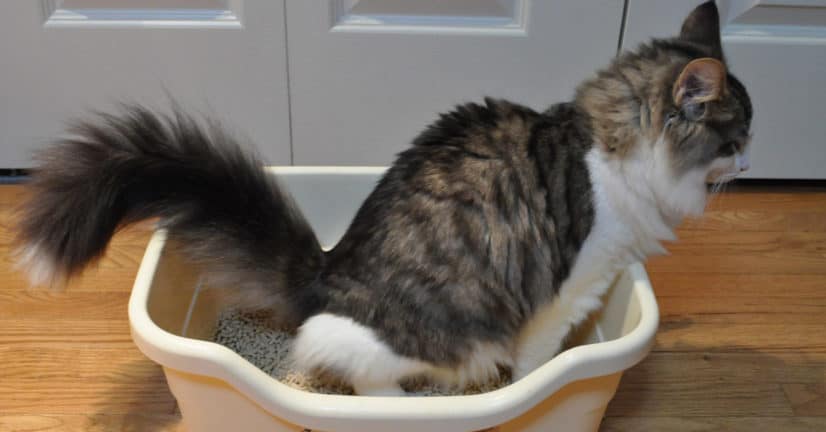Cats are wonderful pets. They are loving, playful, and curious. But sometimes, they face health issues. One common problem is not being able to pee. This can be very serious. In this article, we will explore why your cat can’t pee. We will also discuss symptoms, causes, and treatments.

Credit: vetspace.2ndchance.info
Symptoms of Urinary Problems in Cats
First, let’s understand the symptoms. Knowing the signs can help you act quickly. Here are some symptoms to watch for:
- Straining to pee
- Peeing outside the litter box
- Frequent trips to the litter box
- Small amounts of urine
- Blood in urine
- Crying while peeing
- Excessive licking of the genital area
- Lethargy and loss of appetite
If you notice any of these symptoms, it is important to see a vet. Urinary issues can be painful and dangerous.
Common Causes of Urinary Problems
There are several reasons why a cat may have trouble peeing. Here are some common causes:
Urinary Tract Infection (uti)
A UTI is a bacterial infection. It can cause inflammation and pain. Cats with a UTI may strain to pee. They may also pee more often. Antibiotics can treat a UTI.
Urinary Stones
Stones can form in the bladder or urethra. They can block urine flow. This can be very painful. Surgery may be needed to remove the stones.
Feline Lower Urinary Tract Disease (flutd)
FLUTD is a term for various urinary problems. It includes infections, stones, and inflammation. Stress, diet, and genetics can all play a role. Treatment depends on the specific issue.
Urethral Obstruction
Urethral obstruction is a serious condition. It occurs when the urethra is blocked. This can be life-threatening. Immediate veterinary care is needed. A catheter may be used to unblock the urethra.
Bladder Inflammation (cystitis)
Cystitis is inflammation of the bladder. It can cause pain and frequent urination. Stress and diet can contribute to cystitis. Treatment may include medication and dietary changes.
Bladder Tumors
Sometimes, tumors can form in the bladder. They can block urine flow. Treatment may include surgery and medication.
Behavioral Issues
Stress and anxiety can affect a cat’s peeing habits. Changes in the environment, new pets, or moving homes can cause stress. Behavior modification and stress reduction can help.
Diagnosis and Treatment
Proper diagnosis is crucial for treatment. Your vet will perform a physical exam. They may also run tests. Here are some common diagnostic tests:
- Urinalysis
- Blood tests
- X-rays
- Ultrasound
Based on the diagnosis, your vet will recommend treatment. Here are some common treatments:
Medication
Antibiotics can treat infections. Pain relievers and anti-inflammatory drugs can help with pain and inflammation.
Dietary Changes
Special diets can prevent stones and crystals. Your vet may recommend a prescription diet.
Surgery
Surgery may be needed to remove stones or tumors. It can also help with severe blockages.
Fluid Therapy
IV fluids can help flush out the urinary system. This is often used in severe cases.
Catheterization
A catheter may be used to unblock the urethra. This is usually done under anesthesia.

Credit: vetsklinic.co.uk
Preventing Urinary Problems
Prevention is always better than treatment. Here are some tips to keep your cat’s urinary system healthy:
Provide Fresh Water
Make sure your cat always has access to fresh water. This helps keep the urinary system healthy.
Feed A Balanced Diet
A balanced diet can prevent urinary issues. Ask your vet for diet recommendations.
Reduce Stress
Minimize stress in your cat’s environment. Provide a safe, calm space for your cat.
Regular Vet Check-ups
Regular vet visits can catch problems early. Schedule check-ups at least once a year.
Frequently Asked Questions
Why Can’t Cat Pee Normally?
Urinary tract infections or blockages can cause abnormal urination in cats. Consult your veterinarian for proper diagnosis.
What Causes Cat Urinary Issues?
Common causes include infections, bladder stones, and stress. Proper diagnosis by a vet is essential for treatment.
Can Stress Affect My Cat’s Pee?
Yes, stress can lead to urinary problems in cats. Creating a calm environment can help reduce stress-related issues.
How To Tell If My Cat Has Uti?
Signs include frequent urination, blood in urine, and straining to pee. Seek veterinary care if you notice these symptoms.
Conclusion
Urinary problems in cats are serious. They can cause pain and discomfort. If your cat can’t pee, see a vet right away. Understanding the symptoms and causes can help you take action. With proper care, your cat can lead a healthy, happy life.
Remember, always consult your vet for any health concerns. They can provide the best advice for your furry friend.

Hello, this is Frank Swanson, the owner, and operator of Pet Info Hut. I created this website as a way to share my love of pets with the world. I have over 7 years of experience working with animals, and I have a passion for helping people care for their pets. I hope that you find my website useful and informative. Thanks for visiting!
